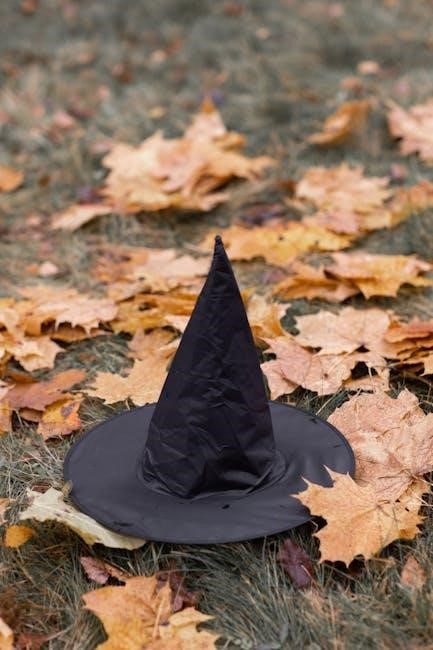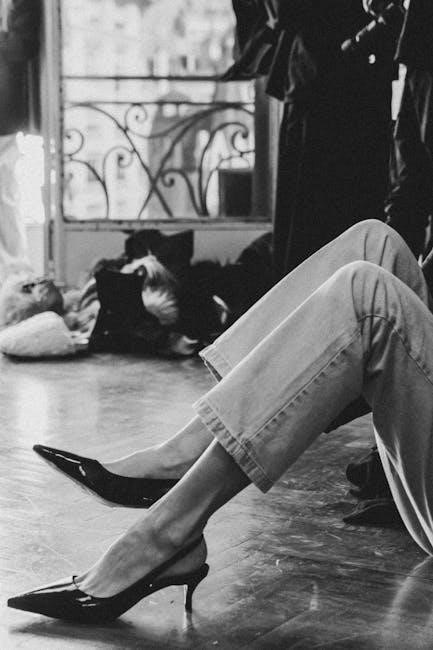Overview of “The Lion, the Witch and the Wardrobe”
C.S. Lewis’s “The Lion, the Witch and the Wardrobe” is a cherished children’s story, the first book in “The Chronicles of Narnia” series, captivating readers with its blend of fantasy and deeper themes.

Availability of PDF Versions
Digital versions of “The Lion, the Witch, and the Wardrobe” are widely accessible. PDF files can be found for download, offering readers convenient access to the novel on various devices.
Free PDF Downloads
Numerous websites offer free PDF downloads of “The Lion, the Witch, and the Wardrobe.” These PDFs provide a convenient way to access the book on computers, tablets, and smartphones. Readers can easily find these versions through a simple online search. However, it’s important to ensure that the download source is reputable to avoid potential malware or copyright issues.
Many educational websites and online libraries also provide free PDF copies as part of their resources for students and educators. These PDFs are often formatted for easy reading and printing, making them ideal for classroom use or personal study. Always verify the legitimacy of the source before downloading to guarantee a safe and legal experience. Enjoy reading this classic tale!
PDF for Tablets
Reading “The Lion, the Witch, and the Wardrobe” on a tablet offers a delightful experience. PDF versions are readily available and optimized for tablet viewing. These PDFs often feature adjustable font sizes and brightness settings, enhancing readability. Tablets provide a portable way to carry this classic tale, perfect for travel or cozy reading sessions at home.
Many PDF readers on tablets include features like bookmarking and annotation, allowing readers to engage more deeply with the text. Some PDFs are specifically formatted to fit tablet screens, ensuring a seamless reading experience. Downloading a PDF version onto your tablet is a convenient way to revisit the magical world of Narnia. Ensure your PDF reader is up to date for optimal performance.

Character Analysis
“The Lion, the Witch, and the Wardrobe” boasts compelling characters. From the valiant Aslan to the malevolent White Witch, each plays a pivotal role. The Pevensie siblings also show great growth.
Aslan: The Great Lion
Aslan, the magnificent lion, stands as a central figure in “The Lion, the Witch, and the Wardrobe,” embodying goodness, justice, and sacrificial love. He is the rightful ruler of Narnia, a land held captive by the White Witch’s icy grip. Aslan’s presence brings hope and renewal, signaling the end of the 100-year winter.
His character is complex, blending regal authority with gentle compassion. Aslan’s wisdom guides the Pevensie children, helping them understand their roles in Narnia’s destiny. He is not tame, yet he is good, representing a force of nature that is both powerful and benevolent.
Aslan’s ultimate sacrifice on the Stone Table demonstrates his deep love for Narnia and its inhabitants. By willingly giving his life, he fulfills an ancient magic, breaking the Witch’s power and paving the way for Narnia’s liberation and restoration. His resurrection further solidifies his role as a symbol of hope and redemption.
The White Witch’s Evil Powers
The White Witch, also known as Jadis, is the embodiment of evil in “The Lion, the Witch, and the Wardrobe.” Her most potent power is her ability to wield dark magic, which she uses to plunge Narnia into an eternal winter. This 100-year freeze is not merely a change in season but a symbol of her oppressive rule and the stifling of all that is good and vibrant.
She possesses the power to turn creatures into stone, a chilling display of her absolute control and lack of compassion. Her reign is built on fear, and she uses her magic to enforce obedience and crush any opposition. The White Witch’s wand is an instrument of terror, capable of inflicting pain and transforming living beings into lifeless statues.
Her influence extends beyond magic, as she manipulates and deceives those around her, exploiting their weaknesses to further her own agenda. Edmund’s betrayal is a direct result of her manipulative tactics, highlighting the insidious nature of her evil.

Plot Summary
Four siblings discover Narnia through a wardrobe, a land gripped by the White Witch’s eternal winter. They join Aslan to break the spell, fight evil, and restore Narnia to its former glory.
Lucy’s Discovery of Narnia through the Wardrobe
During a game of hide-and-seek in the Professor’s old house, Lucy Pevensie stumbles upon an old wardrobe. Driven by curiosity, she steps inside, venturing deeper and deeper until she finds herself not surrounded by coats, but in a snowy forest. This marks her entrance into the magical land of Narnia, a place she could never have imagined. The snowy setting is strange and beautiful, unlike anything she’s ever known.
In this mystical new world, Lucy encounters Mr. Tumnus, a faun, who welcomes her to Narnia. He invites her to his cozy home and shares stories of the land. Little does she know, Narnia is under the icy grip of the White Witch, and her innocent visit sets in motion a chain of events that will change Narnia forever. Her siblings will soon follow, but for now, it is Lucy who first experiences the wonder and danger that Narnia holds. This discovery is pivotal, marking the beginning of their adventure.
The 100-Year Winter
Narnia is suffering under a seemingly endless winter, a consequence of the White Witch’s cruel reign. This icy grip has lasted for a century, freezing the land and its inhabitants in a perpetual state of cold and despair. The White Witch, with her powerful magic, has ensured that it is always winter, but never Christmas, robbing Narnians of joy and hope.
This prolonged winter symbolizes the oppressive nature of evil and the absence of goodness. It affects all aspects of life in Narnia, from the barren landscapes to the spirits of its creatures. The constant cold serves as a constant reminder of the Witch’s power and the hopelessness of their situation. The creatures of Narnia long for the return of Aslan, hoping that he will break the Witch’s spell and bring warmth and life back to their frozen world. The winter is not just a season; it’s a reign of terror.
The Spell Begins to Break
As the Pevensie children journey deeper into Narnia, subtle signs indicate that the White Witch’s icy grip is weakening. The arrival of Father Christmas, a symbol of hope and joy, marks a pivotal shift. His presence defies the Witch’s decree of “always winter, never Christmas,” signaling the beginning of her waning power.
Gifts bestowed upon the children are not merely presents but tools to combat the Witch’s evil; Peter receives a sword and shield, Susan a bow and horn, and Lucy a healing cordial and dagger. These gifts empower them to actively fight against the oppressive winter and defend the forces of good. The breaking of the spell coincides with Aslan’s imminent return, further amplifying the hope that spring will soon return to Narnia. The thaw is both literal and symbolic, representing the melting away of fear and despair.
Peter’s First Battle
Peter’s first battle marks a crucial turning point in the war against the White Witch. When the children are attacked by Maugrim, the Witch’s chief wolf, Peter steps forward to protect his siblings. Armed with the sword and shield given to him by Father Christmas, he faces Maugrim in a fierce duel.
Although initially hesitant, Peter quickly rises to the challenge, displaying courage and determination. With Aslan’s encouragement, he slays Maugrim, proving himself a valiant warrior. This victory not only saves his siblings but also weakens the Witch’s forces and inspires hope in the Narnians. Aslan knights Peter “Sir Peter Wolfsbane” for his bravery, solidifying his role as a leader and foreshadowing his future as High King of Narnia. The battle is a testament to Peter’s growth and the power of good in overcoming evil.
The Triumph of Aslan
Aslan’s triumph is the culmination of the battle between good and evil in Narnia. After sacrificing himself on the Stone Table to save Edmund, Aslan returns to life, embodying the power of Deep Magic From the Dawn of Time. His resurrection breaks the Witch’s power and signals the end of the 100-year winter.
Leading an army of liberated creatures, Aslan confronts the White Witch in a final battle. His roar shatters her forces, and he defeats her, ending her reign of terror. With the Witch vanquished, Aslan restores Narnia to its former glory, bringing warmth, life, and joy back to the land. He crowns Peter, Susan, Edmund, and Lucy as kings and queens, ushering in a new era of peace and prosperity. Aslan’s triumph symbolizes hope, redemption, and the ultimate victory of good over evil.

Themes
“The Lion, the Witch, and the Wardrobe” explores profound themes. These include the timeless struggle between good versus evil, sacrifice, redemption, and the powerful, ancient magic that shapes the destiny of Narnia and its inhabitants.
Good vs. Evil
The central conflict in “The Lion, the Witch, and the Wardrobe” revolves around the stark contrast between good and evil. Aslan, the majestic lion, embodies goodness, justice, and self-sacrifice. He represents the ultimate force for righteousness in Narnia, working to liberate the land from the White Witch’s tyrannical grip.
Conversely, the White Witch personifies evil, wielding her dark magic to maintain a perpetual winter and oppress the creatures of Narnia. Her desire for power and control leads her to cruelty and injustice, creating a world of fear and despair.
The story highlights the consequences of choosing sides in this battle, demonstrating that even small acts of courage and kindness can contribute to the triumph of good. Peter’s first battle, guided by Aslan’s principles, showcases the importance of fighting for what is right, even in the face of overwhelming odds.
Deep Magic from the Dawn of Time
“Deep Magic from the Dawn of Time” is a crucial concept in “The Lion, the Witch, and the Wardrobe,” representing the ancient and immutable laws that govern Narnia. This magic, established at the creation of the world, dictates the consequences of actions and the balance between good and evil.

The White Witch understands and exploits a part of this Deep Magic, believing she has the right to claim any traitor’s life. However, Aslan reveals an even deeper magic, unknown to the Witch, which allows for sacrifice and redemption. This deeper magic demonstrates the power of love and forgiveness, overriding the Witch’s claim and ultimately leading to her defeat.
The unveiling of this deeper magic highlights the story’s underlying themes of sacrifice, redemption, and the ultimate triumph of good over evil. It emphasizes that true power lies not in brute force or control, but in selfless love and adherence to a higher moral code.

Adaptations and Performances
“The Lion, the Witch, and the Wardrobe” has inspired numerous adaptations, including stage productions, films, and television series. These performances bring the magical world of Narnia to life for new audiences.
Stage Adaptations
Adam Peck’s stage adaptation innovatively expands on minor characters, while various productions continue to charm audiences. The story’s inherent theatricality lends itself well to stage interpretations, allowing for creative expression in set design, costume, and performance; From grand spectacles to intimate renderings, stage adaptations capture the magic and wonder of Narnia, offering a unique experience for theatergoers.
The play often incorporates music and whimsy, enhancing the fantastical elements of the narrative. The use of stagecraft effectively portrays the transition through the wardrobe and the enchanted world. Many productions tour extensively, bringing the story to diverse communities. The enduring popularity of the book ensures that stage adaptations remain a beloved form of experiencing the story.
These adaptations provide a new perspective on the classic tale, emphasizing different aspects and engaging audiences in new ways. The power of live performance amplifies the emotional impact of the story.
The Nevada Conservatory Theatre Production

The Nevada Conservatory Theatre (NCT) proudly presented C.S. Lewis’s masterpiece, “The Lion, the Witch, and the Wardrobe,” bringing the magical world of Narnia to life on stage. Directed by Ann-Marie Pereth, the production ran in the Judy Bayley Theatre, enchanting audiences with its imaginative staging and compelling performances.
The NCT’s interpretation aimed to capture the essence of the classic novel, emphasizing the themes of good versus evil and the transformative power of sacrifice. The production incorporated music and whimsy, creating a captivating experience for audiences of all ages. The talented cast and crew worked diligently to bring the beloved characters and fantastical creatures of Narnia to life.
The NCT production provided a memorable theatrical experience, showcasing the enduring appeal of C.S. Lewis’s timeless story. It offered a fresh perspective on the classic tale, highlighting the importance of courage, hope, and the triumph of good over evil.
West End Smash-Hit Production
The West End smash-hit production of “The Lion, The Witch and The Wardrobe” promises an unforgettable theatrical experience, transporting audiences to the enchanting world of Narnia. Scheduled to grace the stage at Sadler’s Wells Theatre from August 20th to September 7th, 2025, this production invites viewers to step through the wardrobe and embark on a magical adventure.
Based on C.S. Lewis’s iconic children’s book, the production boasts stunning visuals, captivating performances, and a heartwarming narrative. It brings to life the beloved characters of Lucy, Edmund, Susan, and Peter as they navigate the perils and wonders of Narnia. The production is celebrated for its ability to capture the spirit of the original story, emphasizing themes of courage, sacrifice, and the ultimate triumph of good over evil.
Audiences can anticipate a spectacular interpretation of C.S. Lewis’s classic, filled with whimsy and wonder.

Anniversary

This year marks the 75th anniversary of “The Lion, the Witch and the Wardrobe,” which was originally published in 1950. This inaugural book is the first in C.S. Lewis’s cherished “Chronicles of Narnia” series.
75th Anniversary of Publication
This year commemorates the 75th anniversary of the publication of “The Lion, the Witch and the Wardrobe,” a landmark event in children’s literature. Published in 1950, it stands as the inaugural book in C.S. Lewis’s beloved “Chronicles of Narnia” series, marking a pivotal moment. The saga has enchanted generations since its release, solidifying its place as a timeless classic. Its enduring appeal lies in its captivating narrative, rich symbolism, and profound exploration of themes like good versus evil and sacrifice.
The anniversary is being celebrated with various events and new editions, renewing interest in the magical world of Narnia and its unforgettable characters. It highlights the story’s lasting legacy and its continued relevance in contemporary culture, reminding us of the power of imagination and the importance of hope, faith, and courage in the face of adversity. The book’s themes resonate as powerfully today as they did 75 years ago.